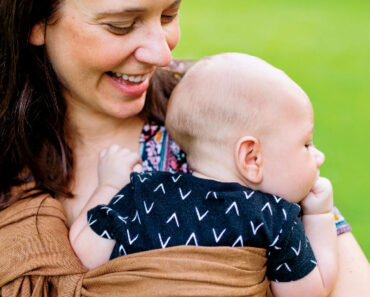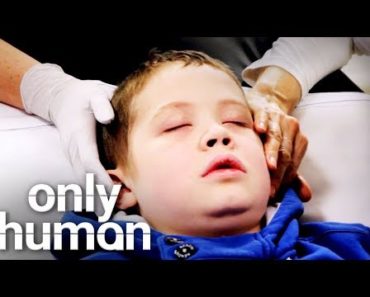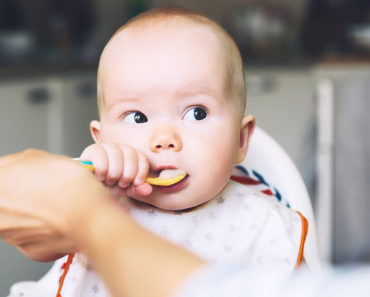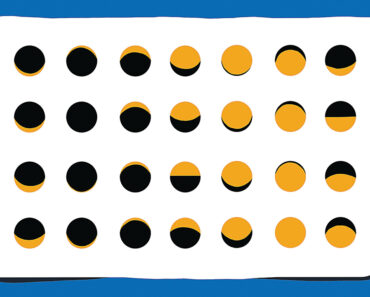A self-mending covering that automatically adjusts to changes in body shape, maintains a comfortable temperature, fends off bacteria and even senses environmental changes — no man-made fabric can match the fantastic feats performed by your child’s skin. But even this amazing material can fall prey to problems. Here’s how you can identify rashes in kids, and what you can do about them.
Our expert panel: Richard Haber, dermatologist, University of British Columbia; Scott Murray, dermatologist, Dalhousie University, Halifax; Ian Landells, dermatologist, Memorial University, St. John’s; Michelle Ponti, paediatrician, London, Ontario
Rashes in babies and toddlers: Age 0-3
Diaper rash
Look for: Raw, red, inflamed skin.
Where: In the diaper area.
Cause: Enzymes in stool breach the skin’s protective barrier, causing irritation that’s aggravated by moisture and rubbing. In other cases, a yeast called candida (the culprit behind thrush) multiplies out of control when something upsets the normal balance of bacteria that live on the skin.
Home care: Changing diapers frequently and airing baby’s bottom can help keep diaper rash at bay. Cleanse the area with warm water (soaps and wipes may remove the skin’s protective oils) and pat dry. Apply petroleum jelly or zinc oxide cream to shield sensitive skin from urine and stool.
See a doctor: If the skin becomes broken or oozes fluid, or if the rash does not start improving after a few days, your family doctor or paediatrician may recommend a cortisone-based salve to hasten healing. Red “satellite” dots around the edges signal a yeast rash, which usually requires treatment with a prescription anti-fungal cream.
Heat rash
Look for: Tiny reddish specks which may turn into small, fluid-filled blisters.
Where: In skin creases, areas covered by clothing or on skin that’s stayed in prolonged contact with a surface — like a car seat — under hot, sticky conditions. Fever can also spark heat rash.
Cause: Overheating plus blocked sweat glands.
Home care: Remove the offending fabric to let heat dissipate. Patting with a damp cloth may also cool the skin. Opt for cotton clothing, which allows air to circulate.
See a doctor: If the rash does not disappear within a few days, your family physician or paediatrician may suggest a mild corticosteroid cream to speed healing.
Infant acne
Look for: Whiteheads and pimples.
Where: On the face.
Cause: Spurred by hormones passed from mother to baby before birth, glands in the skin produce excess oil and become clogged.
Home care: Usually infant acne clears up within a few months without treatment. Don’t pick pimples: Breaking the skin can lead to infection. And avoid harsh soaps and washing more than once or twice daily, which may aggravate the condition.
See a doctor: Consult your physician if spots start looking inflamed: He may prescribe topical antibiotics or other medications.
Impetigo
Look for: Clusters of blisters or red bumps that may ooze fluid and form a honey-coloured crust.
Where: Usually around the nose, mouth or other areas not covered with clothing. The infection can also enter via scratches, scrapes and bug bites.
Cause: Strep or staph bacteria, which are passed by touch. An infected child can pass the impetigo to other parts of her body.
Home care: Applying over-the-counter antibiotic ointment to cuts and scrapes may prevent bacteria from invading wounds.
See a doctor: This fast-spreading infection often needs treatment with oral antibiotics, so see your child’s doctor if you think your child has impetigo.
Roseola
Look for: Small red spots that blossom following four or five days of irritability, sore throat and fever. The giveaway? The rash — which fades within hours and lasts only a day or two — appears when your child’s temperature returns to normal.
Where: On the trunk, spreading to the face, neck and limbs. Roseola (which means “sudden rash”) crops up most commonly between six and 24 months of age.
Cause: A type of human herpes virus. The infection is probably most contagious during the fever phase of the illness, before the rash breaks out.
Home care: Acetaminophen or ibuprofen can help ease fever-related discomfort. While time is the only cure, when the rash flowers, the worst of the illness is over.
See a doctor: If your child’s temperature reaches 39°C (102°F) and does not respond to medication. If you’re pregnant and have never had roseola, check with your doctor.
Rashes in kids: Age 4-8
Chicken pox
Look for: Reddish spots with tiny blisters at the centre, usually preceded by runny nose, cough and mild fever.
Where: All over the body.
Cause: Varicella virus, which is spread through the air or via direct contact. It’s most contagious 24 to 48 hours before the rash develops.
Home care: Calamine lotion, baking soda baths and antihistamines relieve itchiness; ibuprofen or acetaminophen ease chills and aches from fever. Keep kids home until blisters scab over (usually about a week) to avoid passing the virus along.
See a doctor: Any child with fever plus a rash should be looked over by experienced eyes to rule out more serious illnesses. You should also consult your physician if:
• Your child has fever that climbs to 39ºC (102ºF) and doesn’t respond to acetaminophen or ibuprofen;
• The rash looks infected or your child experiences breathing difficulties.
An antiviral medication can reduce the duration and severity of symptoms; and a vaccine can usually prevent chicken pox if it’s given before or soon after exposure. If vaccinated kids do develop the illness, symptoms are usually milder than normal.
Fifth disease
Look for: Lacy red rash, often accompanied by a low-grade fever.
Where: The rash usually first appears on the face in a “slapped cheek” pattern before spreading to the trunk, arms and legs.
Cause: Parvovirus B19, which is passed along in much the same way as viruses that cause the common cold. Though the rash lingers about 10 days, fifth disease is no longer contagious after this symptom emerges.
Home care: Normally, symptoms are mild and don’t need treatment — though some children suffer aching joints, which can be treated with a kids’ pain reliever.
See a doctor: Alert your family doctor or paediatrician if your child has a chronic condition or blood abnormalities. Check with your own physician if you’re expecting: The virus sometimes causes health problems in babies whose mothers are first exposed during pregnancy.
Hives
Look for: Raised red welts.
Where: Anywhere on the body, usually shortly after eating or touching something a child is allergic to, though hives can also be triggered by factors like stress, sun and cold.
Cause: A chemical attack mistakenly launched by immune cells.
Home care: Antihistamines help relieve itching and swelling.
See a doctor: If your child develops hives, visit your doctor: You need to find out whether your child has an allergy and how you should go about handling any future attacks. Take your child to hospital immediately if he has trouble breathing.
Molluscum
Look for: Tiny flesh-coloured or pearly bumps that may have a dimple in the centre.
Where: Can appear almost anywhere on the body, including the face, neck and trunk, and in skin creases.
Cause: A type of poxvirus that is passed along by skin-to-skin contact (a child can spread the virus to other parts of his body) or swimming in a pool that’s been contaminated by someone with molluscum.
Home care: Since the infection is harmless, mild and clears up without treatment, there’s not much parents need to do at home.
See a doctor: If your child is bothered by the bumps or they spread quickly or leave pits in the skin, discuss treatment options with your family doctor or dermatologist. Possibilities include: a prescription cream that revs up infection-fighting cells in the skin, a blistering compound, and surgically scraping away the growths.
Warts
Look for: Flesh-coloured domes, or flat, callous-like growths on the soles of the feet (plantar warts) that may have a dark dot in the middle.
Where: Typically on the hands, feet and face.
Cause: Various types of papillomavirus that are transmitted by physical contact; can spread from one part of the body to another.
Home care: While the body will eventually fight off the infection unaided, it’s best to cover warts with waterproof tape or a bandage to stop the spread. You can try over-the-counter salicylic acid preparations (take care not to burn surrounding skin), but be patient: It may take up to six weeks to see results.
See a doctor: If your child is upset by the warts or they spread to an extensive area, they can be removed with liquid nitrogen, scraping or laser. However, these uncomfortable treatments may not be suitable for small children.
Rashes in kids: Age 9-14
Acne
Look for: Most teens — about 85 percent — develop acne, which ranges in severity from scattered blackheads and whiteheads to inflamed red cysts. The tendency to develop acne seems to be inherited.
Where: On the face, neck, chest and back.
Cause: Surges in sex hormone production drive glands to produce extra oil, and dead skin cells start piling up quickly, blocking pores and sealing in bacteria that normally live inside. While acne isn’t an infection, these bacteria produce irritating substances that build up; the pressure may rupture pore walls.
Home care: Over-the-counter benzoyl peroxide ointments may help curb acne if used correctly: Instead of globbing them on during breakouts, spread over pimple-prone areas once or twice a day. And don’t ditch the cream if zits don’t clear up overnight: It may take six weeks to start working, and it’s normal to experience a flare-up after two or three weeks as skin adjusts to the medication. Overzealous cleansing actually promotes oil overproduction: Most dermatologists recommend washing two or three times a day with a mild soap or a gentle soap-free cleanser.
See a doctor: When drugstore benzoyl peroxide preparations don’t reduce the severity of breakouts, or the pimples become inflamed or leave scars, it’s time for help. Prescription treatments from topical and oral antibiotics to vitamin A creams often bring acne under control.
Cold sores
Look for: Small blisters. The area may tingle for a day or two before the sores appear.
Where: On or near the lips.
Cause: A type of human herpes virus that’s transmitted by touching the blisters (kissing, for example) or sharing cups or other utensils with an infected person.
Home care: Keep the area clean and dry in the blister phase, and lubricated with an over-the-counter antibiotic ointment during the later phase to minimize cracking and bleeding.
See a doctor: Ask for your doctor’s advice if your child experiences frequent outbreaks: While there’s no cure for cold sores, an oral antiviral medication can reduce the severity and duration of each episode.
Shaving rash
Look for: Small red bumps.
Where: Around the base of hairs that have been shaved away.
Cause: Friction and irritation from a razor; the tips of curly hairs can also pierce the skin, becoming ingrown.
Home care: Gently scrubbing with a washcloth before shaving to remove dead skin may help. Use a shaving gel (formulated for sensitive skin) to reduce friction, frequently change blades, shave in the direction of hair growth and don’t share razors. Avoid scented gels, creams and aftershaves: Fragrance can irritate the skin.
See a doctor: Seek medical advice if the rash is severe or becomes infected.
Examining eczema
Imagine the police force responsible for protecting your child’s skin from viruses and bacteria suddenly runs riot. That’s what happens during an eczema flare-up: Immune cells take offence at some minor irritant and launch attacks that cause the skin to erupt into an intensely itchy, inflamed, red, scaly rash.
Scientists still don’t have a fix on why the skin’s defensive forces are so touchy in people who have this type of eczema. Also called atopic dermatitis, this condition affects around 10 to 20 percent of the population, and shows itself between bouts of symptoms as dry, sensitive skin. What they do know is that this type of “irritable” immune system reaction also lies at the root of asthma and hay fever, and a susceptibility to this trio of allergy-linked conditions tends to run in families.
But while researchers haven’t yet found an exact cause or a cure for this common children’s skin rash, that doesn’t mean your child is doomed to scratch forever if she has eczema — about 40 percent of kids outgrow attacks by adulthood. In the meantime, a three-pronged approach to prevention and treatment can also save your child’s skin:
How to keep your kid’s skin moisturized
Normally, natural oils lock moisture into the skin and protect the surface from irritation. This barrier isn’t as strong in a child with eczema, so you have to shore it up with a greasy ointment like petroleum jelly, which should be applied to outbreak-prone areas at least once a day. The best time is after a bath, when the skin is still moist.
Hold harsh chemicals
Sensitive skin shouldn’t be subjected to irritating substances, such as strong soaps, scented skin care products, perfumed laundry detergents and fabric softeners, and wool. Since irritation can set off symptoms, give your child’s skin the kid glove treatment.
Soothe immune cells
Sometimes flare-ups happen despite your best efforts. Several effective treatments, including corticosteroid creams and new topical immune-modulating medications like Elidel and Protopic, calm down immune cells in the skin, easing symptoms — and everyone’s peace of mind.
Editor’s Note: Since we originally published this article in the April 2005 issue, The Food and Drug Administration in the United States has issued an advisory to doctors urging caution in prescribing Elidel and Protopic because of the possibility of cancer. Health Canada says that the current labelling does include a warning about cancer but they are looking at stronger labelling in light of the new information. If your child uses these drugs, talk to your doctor.

































